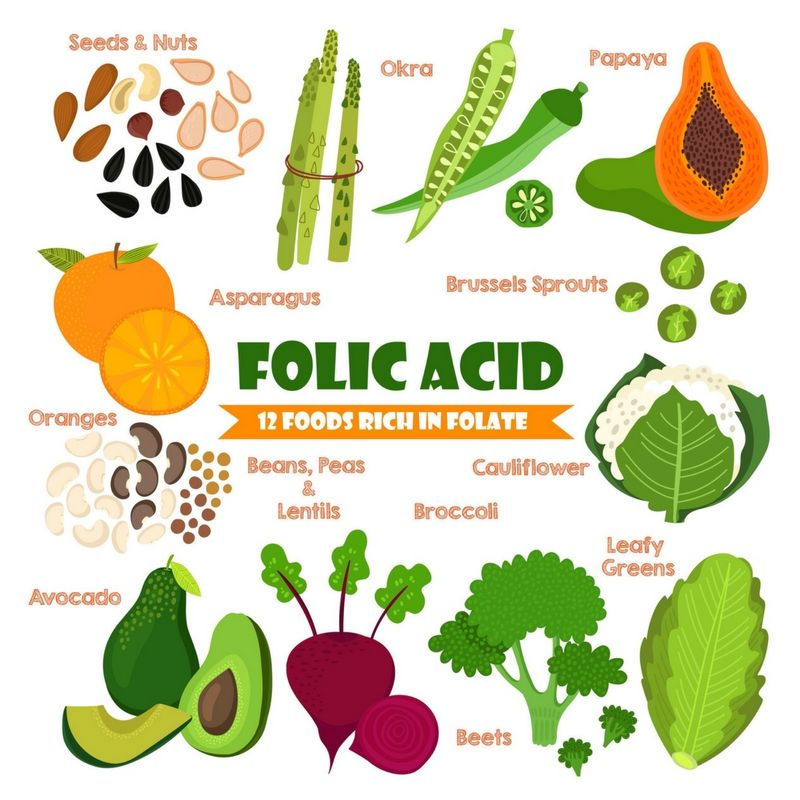Folate rich foods list
15 Healthy Foods That Are High in Folate (Folic Acid)
Folate, also known as vitamin B9, is a water-soluble vitamin that has many important functions in your body.
In particular, it supports healthy cell division and promotes proper fetal growth and development to reduce the risk of birth defects (1).
Vitamin B9 is found naturally in many foods, as well as in the form of folic acid in fortified foods.
It’s recommended that healthy adults get at least 400 mcg of folate per day to prevent a deficiency (2).
Here are 15 healthy foods that are high in folate or folic acid.
Legumes are the fruit or seed of any plant in the Fabaceae family, including:
- beans
- peas
- lentils
Although the exact amount of folate in legumes can vary, they’re an excellent source of folate.
For example, one cup (177 grams) of cooked kidney beans contains 131 mcg of folate, or about 33% of the Daily Value (DV) (3).
Meanwhile, one cup (198 grams) of cooked lentils contains 358 mcg of folate, which is 90% of the DV (4).
Legumes are also a great source of protein, fiber, and antioxidants, as well as important micronutrients like potassium, magnesium, and iron (5).
SUMMARYLegumes are rich in folate and many other nutrients. One cup (198 grams) of cooked lentils contains 90% of the DV, while one cup (177 grams) of cooked kidney beans contains about 33% of the DV.
Asparagus contains a concentrated amount of many vitamins and minerals, including folate.
In fact, a half-cup (90-gram) serving of cooked asparagus contains about 134 mcg of folate, or 34% of the DV (6).
Asparagus is also rich in antioxidants and has been shown to have anti-inflammatory and antibacterial properties (7).
What’s more, it’s an excellent source of heart-healthy fiber, knocking out up to 6% of your daily fiber needs in just one serving (6).
SUMMARYAsparagus is high in fiber and contains a good amount of folate, with about 34% of the DV per half-cup serving.

Adding eggs to your diet is a great way to boost your intake of several essential nutrients, including folate.
Just one large egg packs 22 mcg of folate, or approximately 6% of the DV (8).
Including even just a few servings of eggs in your diet each week is an easy way to boost your folate intake and help meet your needs.
Eggs are also loaded with protein, selenium, riboflavin, and vitamin B12 (8).
Furthermore, they’re high in lutein and zeaxanthin, two antioxidants that may help reduce the risk of eye disorders like macular degeneration (9, 10).
SUMMARYEggs are a good source of folate, with about 6% of the DV in just one large egg.
Leafy green vegetables such as spinach, kale, and arugula are low in calories yet bursting with many key vitamins and minerals, including folate.
One cup (30 grams) of raw spinach provides 58.2 mcg, or 15% of the DV (11).
Leafy greens are also high in fiber and vitamins K and A. They’ve been associated with a host of health benefits.
They’ve been associated with a host of health benefits.
Studies show that eating more cruciferous vegetables, such as leafy greens, may be associated with reduced inflammation, a lower risk of cancer, and increased weight loss (12, 13, 14).
SUMMARYLeafy green vegetables are high in many nutrients, including folate. One cup (30 grams) of raw spinach contains about 15% of the DV.
In addition to providing a burst of color to main dishes and desserts alike, beets are rich in many important nutrients.
They contain much of the manganese, potassium, and vitamin C that you need throughout the day.
They’re also a great source of folate, with a single cup (136 grams) of raw beets containing 148 mcg of folate, or about 37% of the DV (15).
Besides their micronutrient content, beets are high in nitrates, a type of plant compound that has been associated with many health benefits.
One small study showed that drinking beetroot juice temporarily lowered systolic blood pressure by 4–5 mmHg in healthy adults (16).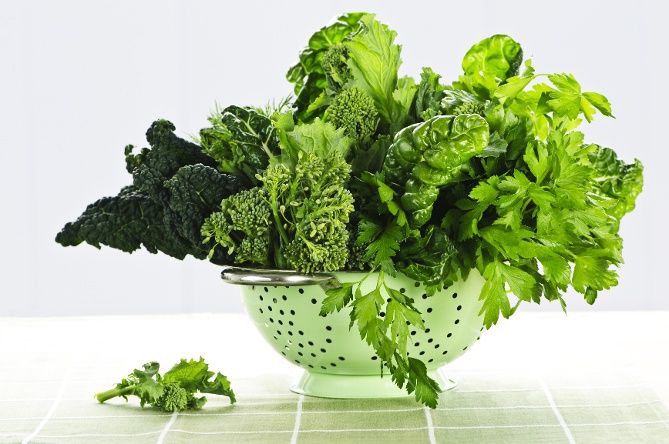
SUMMARyBeets are high in nitrates and folate. One cup (136 grams) of raw beets contains 37% of the DV for folate.
Besides being delicious and full of flavor, citrus fruits like oranges, grapefruit, lemons, and limes are rich in folate.
Just one large orange contains 55 mcg of folate, or about 14% of the DV (17).
Citrus fruits are also packed with vitamin C, an essential micronutrient that can help boost immunity and aid disease prevention (18).
In fact, observational studies have found that a high intake of citrus fruits may be associated with a lower risk of breast, stomach, and pancreatic cancer (19, 20, 21).
SUMMARYCitrus fruits are high in vitamin C and folate. One large orange contains about 14% of the DV.
This nutritious vegetable belongs to the cruciferous family of vegetables and is closely related to other greens like kale, broccoli, cabbage, and kohlrabi.
Brussels sprouts are brimming with many vitamins and minerals and especially high in folate.
A half-cup (78-gram) serving of cooked Brussels sprouts can supply 47 mcg of folate, or 12% of the DV (22).
They’re also a great source of kaempferol, an antioxidant associated with numerous health benefits.
Animal studies show that kaempferol can help to reduce inflammation and prevent oxidative damage (23, 24).
SUMMARYBrussels sprouts contain a good number of antioxidants and micronutrients. One-half cup (78 grams) of cooked Brussels sprouts provides about 12% of the DV for folate.
Well known for its multitude of health-promoting properties, adding broccoli to your diet can provide an array of essential vitamins and minerals.
When it comes to folate, one cup (91 grams) of raw broccoli contains around 57 mcg of folate, or about 14% of the DV (25).
Cooked broccoli contains even more folate, with each half-cup (78-gram) serving providing 84 mcg, or 21% of the DV (26).
Broccoli is also high in manganese and vitamins C, K, and A.
It likewise contains a wide variety of beneficial plant compounds, including sulforaphane, which has been studied extensively for its powerful anti-cancer properties (27).
SUMMARYBroccoli, especially when cooked, is rich in folate. One cup (91 grams) of raw broccoli provides 14% of the DV, while one-half cup (78 grams) of cooked broccoli can supply 21% of your daily needs.
There are plenty of reasons to consider upping your intake of nuts and seeds.
In addition to containing a hearty dose of protein, they’re rich in fiber and many of the vitamins and minerals that your body needs.
Incorporating more nuts and seeds into your diet can also help you meet your daily folate needs.
The amount of folate in various types of nuts and seeds can vary slightly.
One ounce (28 grams) of walnuts contains about 28 mcg of folate, or around 7% of the DV, while the same serving of flax seeds contains about 24 mcg of folate, or 6% of the DV (28, 29).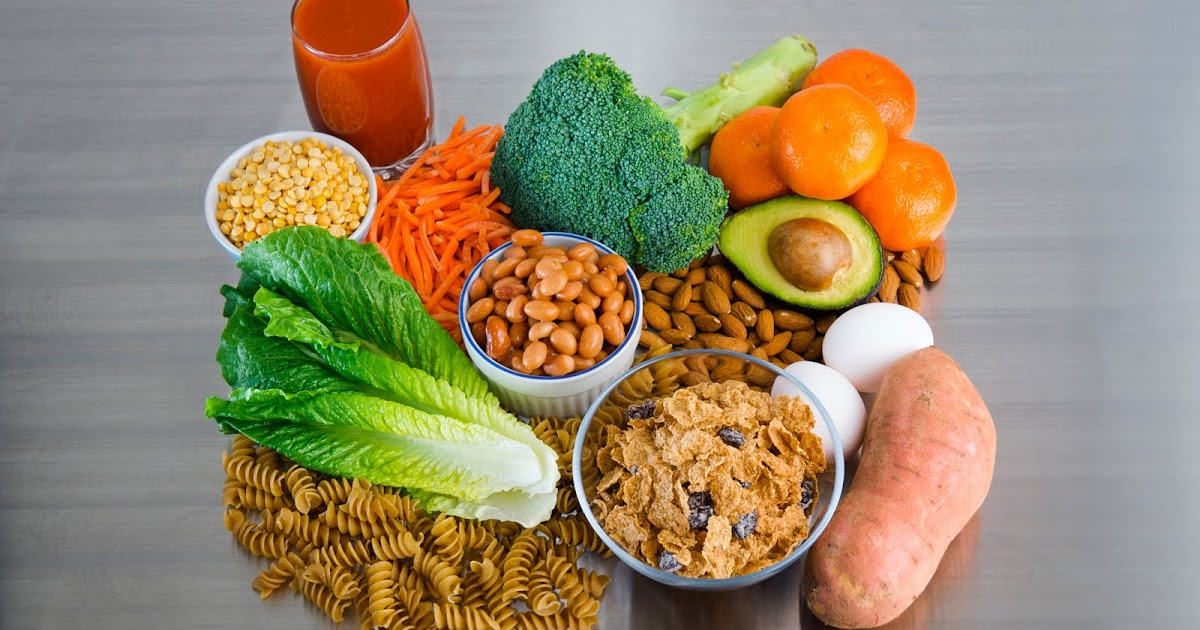
SUMMARYNuts and seeds supply a good amount of folate in each serving. One ounce (28 grams) of almonds and flax seeds provides 7% and 6% of the DV, respectively.
Beef liver is one of the most concentrated sources of folate available.
A 3-ounce (85-gram) serving of cooked beef liver packs 212 mcg of folate, or about 54% of the DV (30).
In addition to folate, a single serving of beef liver can meet and exceed your daily requirements for vitamin A, vitamin B12, and copper (30).
It’s also loaded with protein, providing a whopping 24 grams per 3-ounce (85-gram) serving.
Protein is necessary for tissue repair and the production of important enzymes and hormones.
SUMMARYBeef liver is high in protein and folate, with about 54% of the DV of folate in a single 3-ounce (85-gram) serving.
Wheat germ is the embryo of the wheat kernel.
Although it’s often removed during the milling process, it supplies a high concentration of vitamins, minerals, and antioxidants.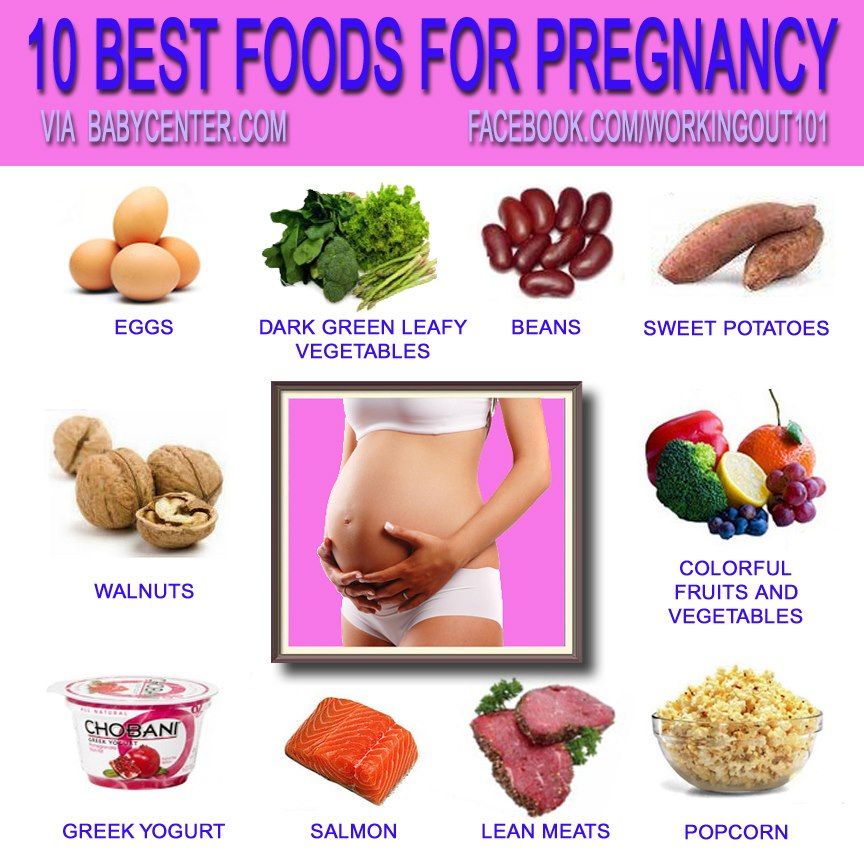
Just one ounce (28 grams) of wheat germ provides 78.7 mcg of folate, which equals about 20% of your daily folate needs (31).
It also contains a good chunk of fiber, providing up to 16% of the fiber you need per day in a single ounce (28 grams) (31).
Fiber moves slowly through your digestive tract, adding bulk to your stool to help promote regularity, prevent constipation, and keep blood sugar levels steady (32, 33).
SUMMARYWheat germ is high in fiber, antioxidants, and micronutrients. One ounce (28 grams) of wheat germ contains about 20% of the DV for folate.
Papaya is a nutrient-dense tropical fruit native to southern Mexico and Central America.
Besides being delicious and full of flavor, papaya is jam-packed with folate.
One cup (140 grams) of raw papaya contains 53 mcg of folate, which is equal to about 13% of the DV (34).
Additionally, papaya is high in vitamin C, potassium, and antioxidants like carotenoids (34).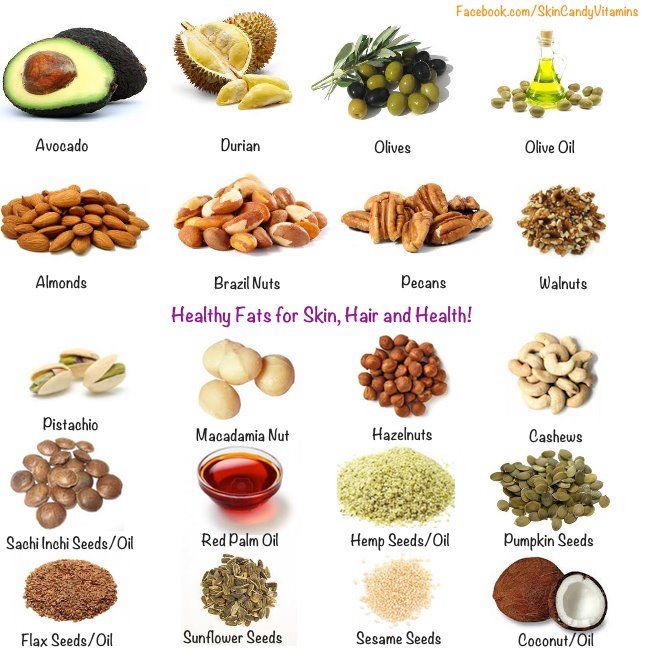
Pregnant women should consider avoiding eating unripe papaya.
Researchers speculate that eating high amounts on unripe papaya might cause early contractions in pregnant women, but the evidence is weak (35).
SUMMARYPapaya is rich in antioxidants and folate. One cup (140 grams) of raw papaya provides approximately 13% of the DV for folate.
Rich in a wide variety of vitamins and minerals, bananas are a nutritional powerhouse.
They’re especially high in folate and can easily help you meet your daily needs when paired with a few other folate-rich foods.
A medium banana can supply 23.6 mcg of folate, or 6% of the DV (36).
Bananas are high in other nutrients as well, including potassium, vitamin B6, and manganese (36).
SUMMARYBananas contain a good amount of folate. One medium banana contains about 6% of the DV.
Avocados are incredibly popular due to their creamy texture and buttery flavor.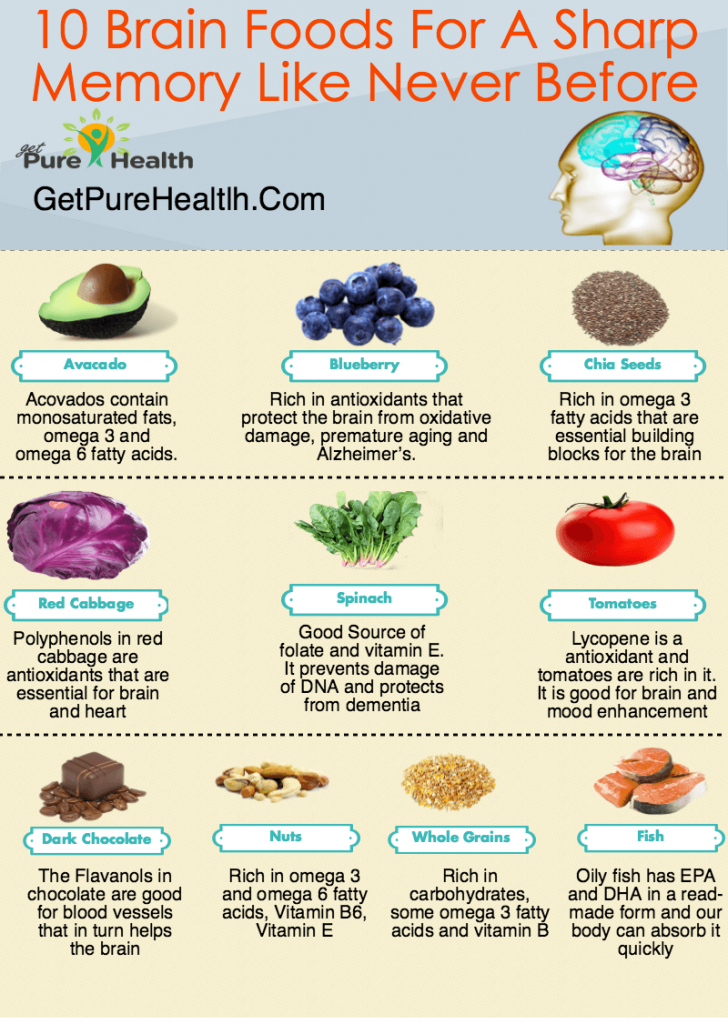
In addition to their unique taste, avocados are an excellent source of many important nutrients, including folate.
One-half of a raw avocado contains 82 mcg of folate, or about 21% of the amount you need for the entire day (37).
Plus, avocados are rich in potassium and vitamins K, C, and B6 (37).
They’re also high in heart-healthy monounsaturated fats, which may protect against heart disease (38).
SUMMARYAvocados are high in heart-healthy fats and folate, with one-half of a raw avocado providing about 21% of the DV for folate.
Many types of grains, such as bread and pasta, have been fortified to boost their folic acid content.
The amounts can vary between different products, but one cup (140 grams) of cooked spaghetti supplies approximately 102 mcg of folic acid, or 25% of the DV (39).
Interestingly, some studies have demonstrated that the folic acid in fortified foods may be more easily absorbed than the folate found naturally in foods.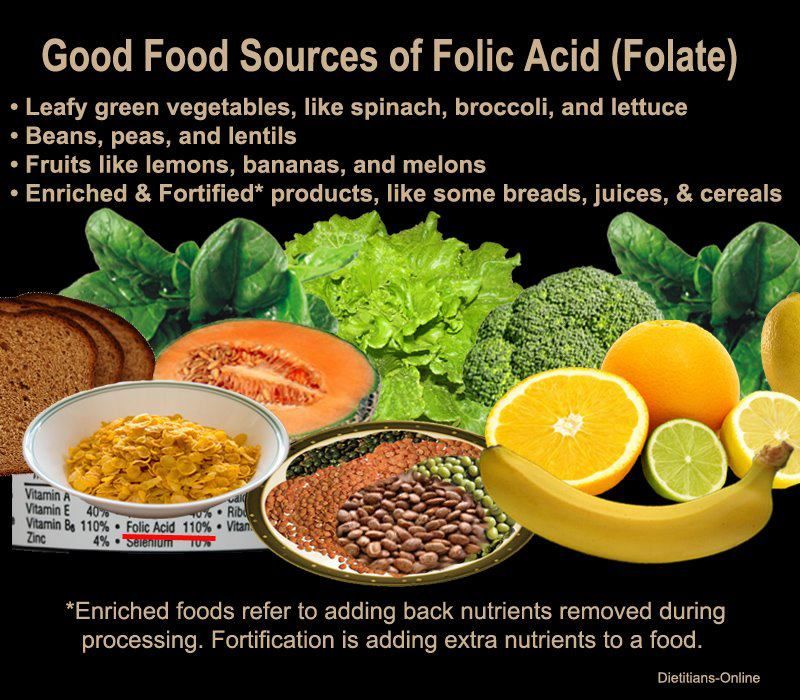
For example, one study concluded that the folate in foods such as fruits and vegetables is only about 78% as bioavailable as the folic acid in fortified foods (40).
Conversely, other research suggests that the specific enzyme the body uses to break down folic acid in fortified foods is not as efficient, which can result in a buildup of unmetabolized folic acid (41).
A well-balanced diet that’s rich in natural sources of folate and includes a moderate number of fortified foods can ensure you’re meeting your needs, all while minimizing potential health concerns.
SUMMARYFortified grains contain added amounts of folic acid. One cup (140 grams) of cooked spaghetti contains about 26% of the DV.
Folate is an important micronutrient found in abundance throughout your diet.
Eating a variety of healthy foods, such as fruits, vegetables, nuts, and seeds, as well as fortified foods, is an easy way to increase your folate intake.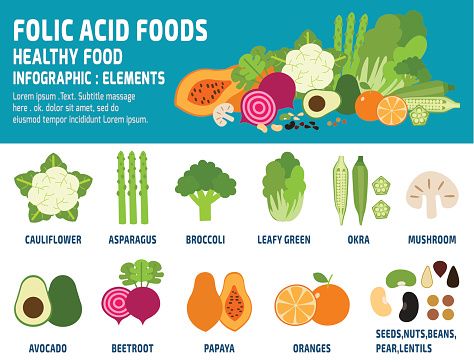
These foods are not only rich in folate but also high in other key nutrients that can improve other aspects of your health.
Here's How to Get More Folic Acid Naturally
You already know eating a healthy and balanced diet is a key component of leading a healthy life, maintaining a healthy weight and preventing chronic conditions. It helps you get the proper amount of nutrients, vitamins and minerals your body needs.
You likely know the importance of vitamin C, vitamin D, calcium, fiber and iron in your diet, but there’s one vitamin you should also be sure to get plenty of: folic acid.
What is folic acid?
Folic acid is a synthetic form of vitamin B, and when it’s naturally occurring, it’s known as folate. Folate is found in many types of dark leafy green vegetables and fruits.
If you have low levels of folate, you may have anemia, muscle weakness and fatigue.
It’s also a powerhouse for women who are or want to become pregnant.
“If a woman has enough folate in her body before and during pregnancy, it can help prevent birth defects, including spina bifida and anencephaly,” says Geisinger registered dietitian nutritionist Janet Milner, RDN.
But folic acid isn’t just important for pregnant women — it provides many health benefits to men and women of all ages because it helps the body make healthy new cells. Folic acid is credited with helping your body break down, create and use new proteins in addition to helping form new blood cells and new DNA.
Health benefits of folic acid
Folic acid has been shown to reduce blood levels of a chemical called homocysteine, which has been linked to heart disease and stroke when found in high levels. Without folic acid, high homocysteine levels can cause blood to clot more easily, potentially leading to heart disease, kidney disease, heart attacks and strokes.
“This mineral is also believed to help with the breakdown of triglycerides, which are a type of fat in blood that’s used for energy,” says Ms. Milner. Type 2 diabetes is linked to high levels of triglycerides, so increasing your folic acid intake can also help lower your chances of developing diabetes.
Some studies have even found that folic acid may play a part in mood regulation and help with depression.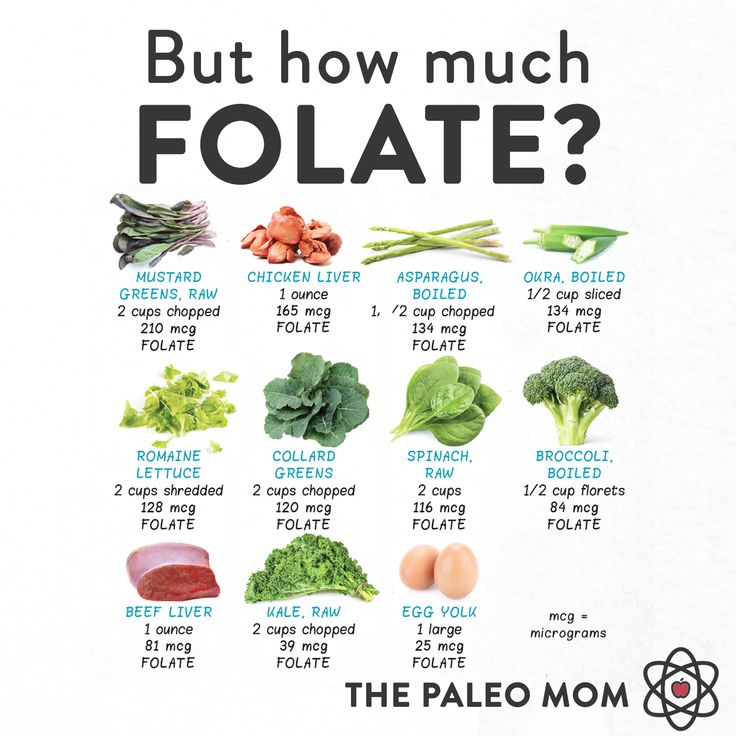 It may also play a key role in preventing overall memory loss associated with aging, possibly even reducing your risk of Alzheimer’s disease.
It may also play a key role in preventing overall memory loss associated with aging, possibly even reducing your risk of Alzheimer’s disease.
Folate rich foods
Want to get more folic acid into your system? You’re in luck — many foods are naturally rich sources of this vitamin.
Adults should get 400 mcg of folic acid per day. While folic acid is commonly found in multivitamins, certain foods can help you reach this goal without their help. Add or increase these foods in your diet for a folate boost:
Grains
Look for the term “enriched” on grain items such as breads, cereals, pasta, rice and wheat germ. Sweet potatoes are also a great source of folic acid.
Dark leafy greens
These have the highest folate levels of any food. Consider adding more spinach, kale, collard greens, turnip greens, romaine lettuce, raw cabbage, Brussel sprouts and broccoli to your diet for an immediate folic acid boost.
Asparagus
Eating one cup of boiled asparagus will provide you with 65 percent of your daily folate needs.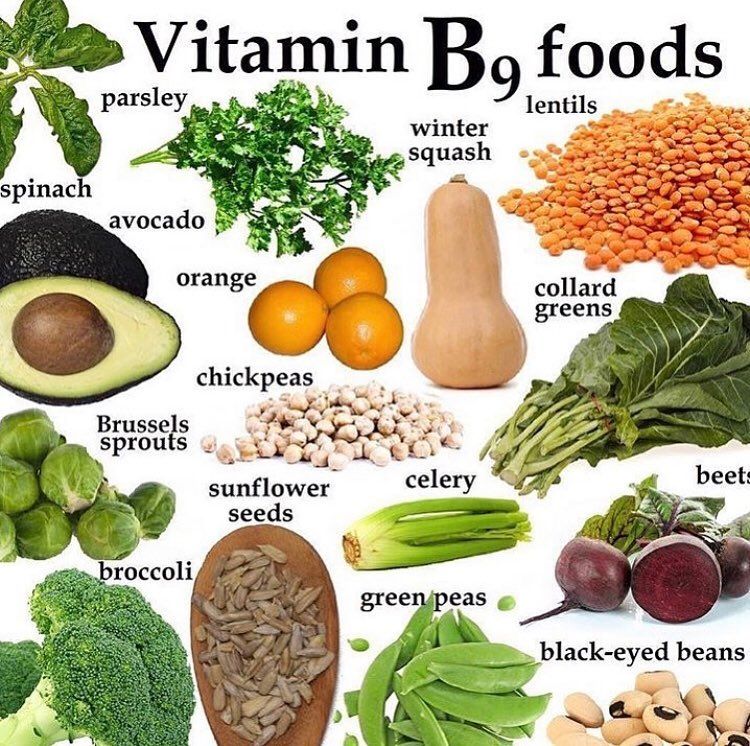
Beans, lentils and peas
These are a great source of folate. A small bowl of any type of lentils will give you the majority of your recommended amounts of folate. Soybeans are also rich in folic acid.
Citrus fruits
Many fruits contain folic acid, but citrus fruits rank highest — oranges are especially high in the vitamin. Other folate-rich fruits include grapefruit, papayas, grapes, bananas, strawberries, raspberries and cantaloupe.
Beef liver
In just 3 ounces, beef liver contains 215 micrograms of folate. It can also increase your iron, vitamin A and copper intake.
Eggs
This easy breakfast contains 22 micrograms of folate and is a great way to start out your day with protein.
“Adding these foods to your diet can help you increase your folic acid levels,” says Ms. Milner. “If you have symptoms of low folate levels, talk with your doctor about supplements. You can also work with a nutritionist to assess your diet and look for opportunities to eat more folate-rich foods.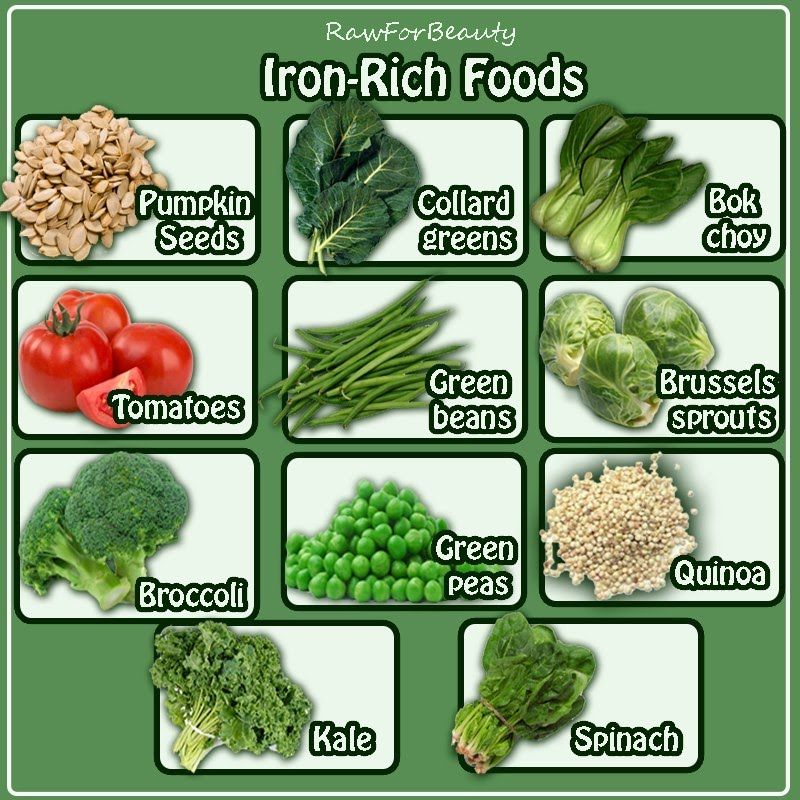 ”
”
Next steps:
Meet Janet A Milner, RDN
Think your folate levels are low? Start with your primary care physician
Check out our dietitian-approved recipes
Folic Acid - Everything You Need to Know
Folic acid is a synthetic form of folate, a water-soluble vitamin also known as vitamin B9. This acid does not occur naturally in foods, but is often added to refined grains such as breads and cereals and is also found in vitamin and mineral dietary supplements. Since folic acid is different from natural folate, it must be converted to the active form of vitamin B9 before the body can use it.(5-MTHF). This process takes place in four stages, each of which requires several enzymes. One such enzyme is the MTHFR (methylenetetrahydrofolate reductase) enzyme. Some people have genetic mutations that reduce the effectiveness of MTHFR, which can lead to a buildup of folic acid in the blood. The accumulation of folic acid in the blood has been linked to negative health effects, including impaired immune function, decreased brain function, and accelerated cancer cell growth.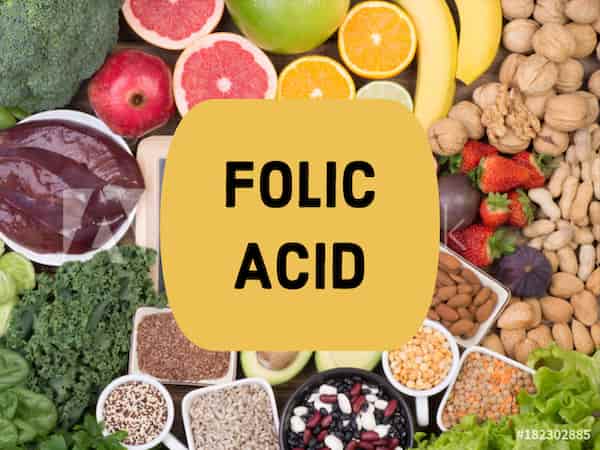 Thus, the rate of conversion of folic acid into an active form is genetically determined and individual for each.
Thus, the rate of conversion of folic acid into an active form is genetically determined and individual for each.
Folic acid is one of the most widely discussed topics in modern nutritional research.
The natural form of vitamin B9 is folate. Foods rich in folate include legumes, asparagus, artichokes, eggs, green leafy vegetables (spinach, arugula, kale), beets, citrus fruits, Brussels sprouts, broccoli, nuts and seeds, beef liver, wheat germ, papayas, bananas, avocados .
However, studies show that most people do not get enough dietary folate to meet their needs, which is why many countries, including the US and Canada, are fortifying refined grains such as white flour, bread, and folic acid. and cereals. Food fortification, for example in the US, has increased folic acid intake by 28% and reduced the rate of folate deficiency in the population (measured by the amount of folate in red blood cells) from 39% to less than 4%.
The specified physiological requirement for vitamin B9 for adults is 400 micrograms per day (pregnant women need 600 micrograms per day), for children - 50-400 micrograms per day.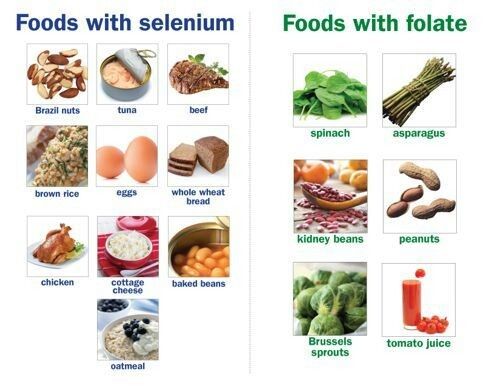 The upper tolerable intake level is 1000 micrograms per day.
The upper tolerable intake level is 1000 micrograms per day.
Adequate levels of vitamin B9 are associated primarily with the prevention of neural tube defects. Low levels of folic acid in the first weeks of pregnancy lead to malformations of the brain, spinal cord and/or spine. Since up to 90% of women do not get enough vitamin B9, all women of reproductive age are advised to take at least 400 micrograms of additional folate per day. Many dietary supplements intended for pregnant women contain folic acid, but it is better to use special dietary supplements containing methylfolate (5-MTHF), since this active form of vitamin B9 can be used by the body without additional transformations.
A high intake of folic acid is known to protect against certain types of cancer, including breast, colon, lung, and pancreatic cancer. This is most likely due to the role of folate in gene expression. Some researchers believe that low folate levels may increase the risk of abnormal cell growth.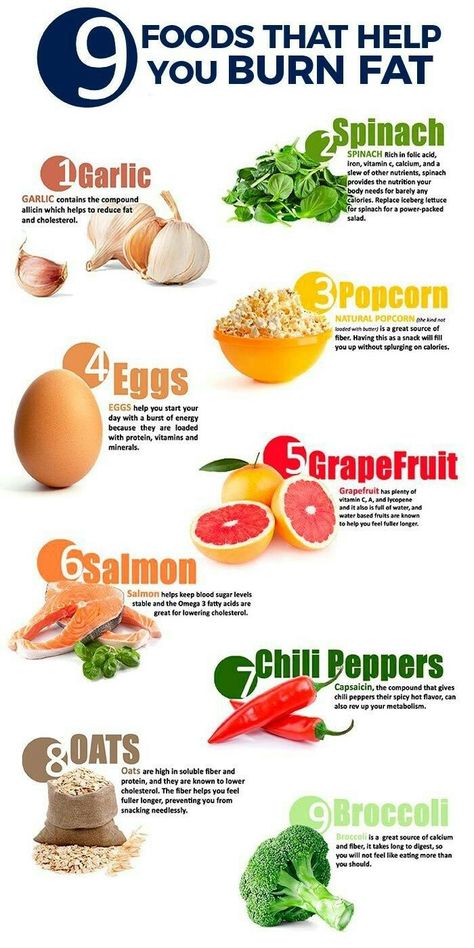
Low levels of folate also contribute to the formation of unstable and easily degradable DNA, which can increase the risk of cancer.
However, for people with pre-existing cancer, there is some evidence that a high intake of folic acid (from dietary supplements, but not from foods) may contribute to the growth of certain types of tumors.
Adequate folate levels help reduce homocysteine, which has been linked to cardiovascular disease.
Folate helps convert homocysteine to methionine. With a lack of folate, homocysteine levels rise. Studies have shown that daily intake of folic acid can reduce homocysteine levels by 25%.
Severe vitamin B9 deficiency is uncommon, especially in countries where folate fortification has been established. However, people with inflammatory bowel disease, smokers, and people who abuse alcohol may suffer from folate deficiency.
Signs and symptoms of folic acid deficiency include:
increased blood homocysteine levels, megaloblastic anemia (anemia with large red blood cells), fatigue, weakness, irritability, shortness of breath. Keep in mind that megaloblastic anemia can be both a sign of folate deficiency and a sign of vitamin B12 deficiency. In this condition, folic acid supplementation can cure anemia without correcting vitamin B12 deficiency, which in turn can lead to neuropathy.
Keep in mind that megaloblastic anemia can be both a sign of folate deficiency and a sign of vitamin B12 deficiency. In this condition, folic acid supplementation can cure anemia without correcting vitamin B12 deficiency, which in turn can lead to neuropathy.
If you want to supplement your diet with folate by using folate-rich foods or folic acid supplements, be sure to check with your doctor first.
Source: https://www.healthline.com/nutrition/
Foods rich in folic acid | Clinic MEdel
British nutritionists have refuted the hypothesis that eating after six in the evening is harmful. It turns out that a person gains weight only if the number of "eaten" calories, and no matter what time of day, exceeds the number burned.
Folic acid is the most valuable source of vitamin B9 needed by the body during pregnancy. The norm for a woman of childbearing age is 400-800 micrograms of folic acid per day.
It is recommended that folate supplementation be started before pregnancy.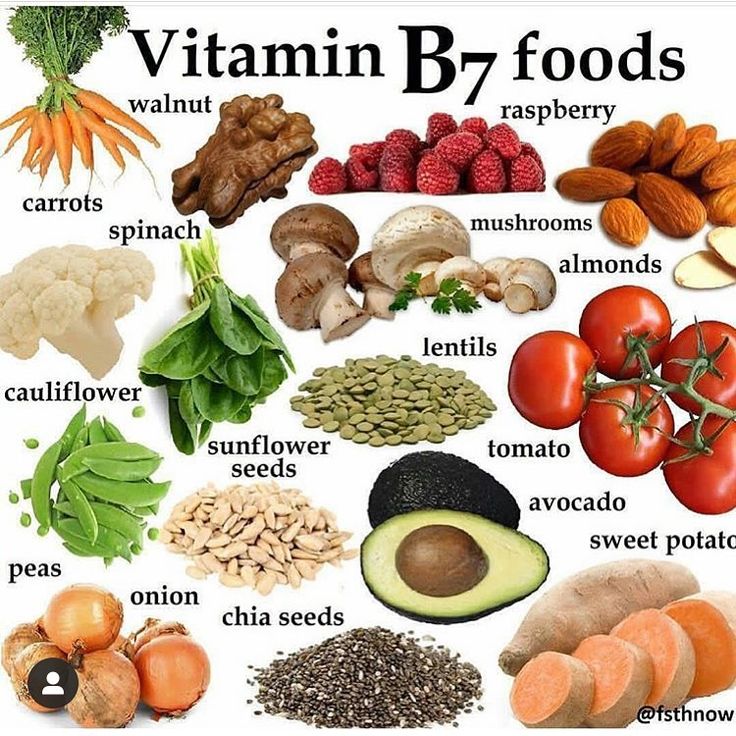 Neural tube defects usually develop in the first 28 days of pregnancy.
Neural tube defects usually develop in the first 28 days of pregnancy.
If you find that you are pregnant and have not taken folic acid, we recommend starting now to prevent any defects in the first trimester.
What is the difference between folic acid and folate?
People often use them interchangeably, since they are forms of vitamin B9, there is actually an important difference.
-
Folic acid is the synthesized version commonly used in processed foods and supplements.
-
Folate can be found in whole foods such as green vegetables, nuts, and citrus fruits.
Therefore, it is preferable to take it from whole food sources or supplements containing the natural form of active folate instead of synthesized folic acid.
What foods are rich in folic acid?
-
Legumes.
-
Asparagus.
-
Eggs. Include a few servings of eggs in your diet every week and you will increase your folic acid intake.
